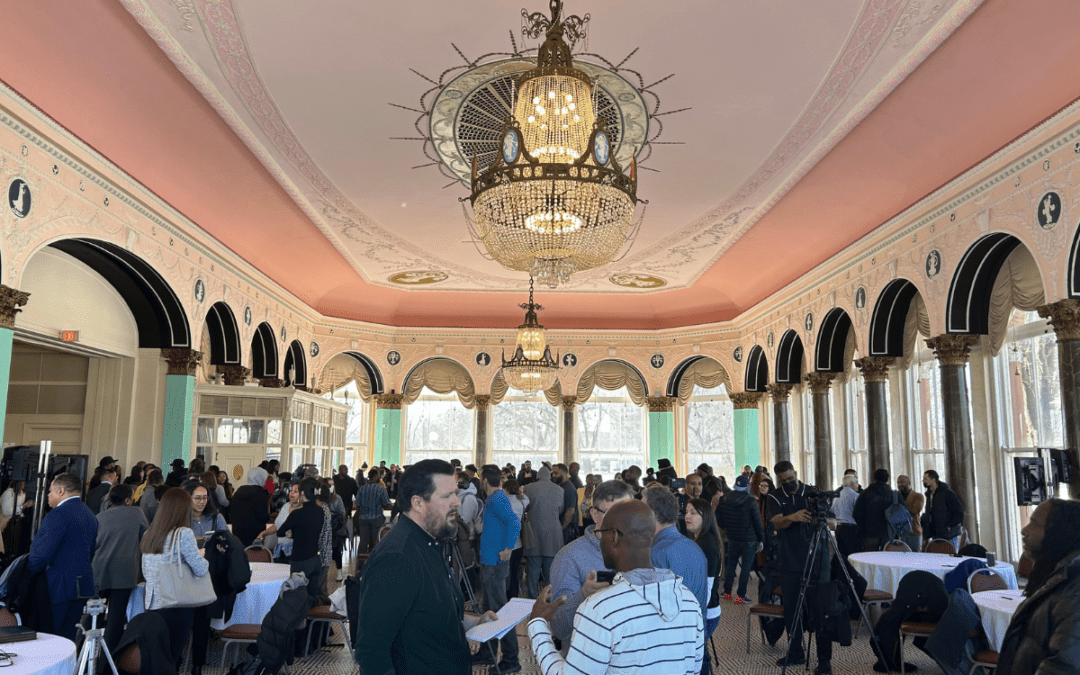Community, government, non-profit and business leaders came together today to affirm their commitment to making violence prevention programs a permanent and central feature of Chicago’s public safety strategy. At South Shore Cultural Center, 7059 South South Shore Drive, more than a dozen speakers emphasized the critical need to engage with young people at risk to reduce gun violence.
“Permanent and increased investment in our evidence-based programs is critical to creating greater access for the people that we serve and reducing gun violence in our city,” said Jorge Matos, Executive Director of READI Chicago. “Community buy-in and collaboration with our partner organizations means a continuum of care for our participants and a broader impact throughout Chicago.
Chicago closed out 2022 with an approximately 14% drop in homicides and a 21% drop in shootings compared to 2021. In some neighborhoods where violence prevention programs invest heavily, including North Lawndale, Austin, Englewood and West Pullman, gun violence declined by 35-45 percent in 2022.
“We don’t claim our efforts alone drove these dramatic declines in gun violence, but they were certainly an important factor, along with more effective policing and community investments,” said Vaughn Bryant, Executive Director of Metropolitan Peace Initiatives (MPI).
MPI convenes Communities Partnering 4 Peace (CP4P) comprising 13 community-based organizations serving 28 neighborhoods. MPI helps heal Chicago’s communities experiencing high levels of gun violence through training for outreach workers, behavioral health services, workforce development, legal aid services and operational support.
The event featured remarks from City, County and State officials, including, Dr. Allison Arwady, Commissioner, Chicago Dept. of Public Health; Lanetta Haynes Turner, Chief of Staff, Cook County Board President; and Chris Patterson, Assistant Secretary of Firearm Violence Prevention, Illinois Department of Human Services. All three levels of government have dramatically boosted funding for violence prevention programs in recent years from just $7M in 2017 to $124M last year.
“Chicago is embracing a public health approach to reducing gun violence, by going far beyond traditional policing and helping the individuals at risk change their lives,” said Arwady. She added, “Education, job training, trauma treatment and community investments are all part of the solution.”
Ms. Haynes Turner added, “County leaders understand that enforcement is just one of many tools needed to make us all safer, along with diversion programs in the courts, reforms to the criminal justice system, and scaling up investments in violence prevention programs like the ones we are now supporting.”
Patterson said that the state has now picked up funding to expand a program that puts trusted and respected individuals with direct relationships to active street factions at some of the most violent locations in the city to help reduce shootings.
The program, called FLIP (Flatlining Violence Inspires Peace), began in 2018 with private funding, serving just 21 locations in 3 communities during summertime evening and weekends. It is now state-funded and will serve nearly 100 locations in 14 communities year-round. Research from Northwestern shows that gun violence at these “hot spots” drops dramatically when FLIP workers are present.
“FLIP is backed by research, it’s innovative, and, most important, it is saving lives,” said Patterson, adding, “The state is thrilled to help take this program to more communities and run it year-round.”
Esther Franco-Payne is the new Executive Director of the Partnership for Safe and Peaceful Communities (PSPC), a consortium of about 50 foundations and donors that has supported violence prevention programs since 2016. She said, “PSPC is 100 percent committed to strengthening the partnerships needed to make violence prevention a permanent feature of Chicago’s public safety strategy.”
Just this week, PSPC issued its annual request for proposals from community groups to create safety-related events during the summer months. Last year, more than 200 groups received funding to support a variety of community activities.
Teny Gross, Executive Director, Institute for Non-Violence Chicago, has worked in violence prevention in Boston and Providence. He said that Chicago is becoming a national leader in violence prevention, adding “We have built the architecture we need to bring down gun violence. Each year, we are reaching more people and getting better and better at the work.”
Duncan closed the program by outlining a $2.2 billion five-year plan to take violence prevention to scale with the goal of bringing gun violence in Chicago on par with both New York and Los Angeles.
“For a small fraction of what we spend on policing and the criminal justice system, we can dramatically reduce shootings and catch up with other cities that have been doing this work for years. It just requires the will, the funding, and the collaboration of all of the people in this room today,” Duncan said.
